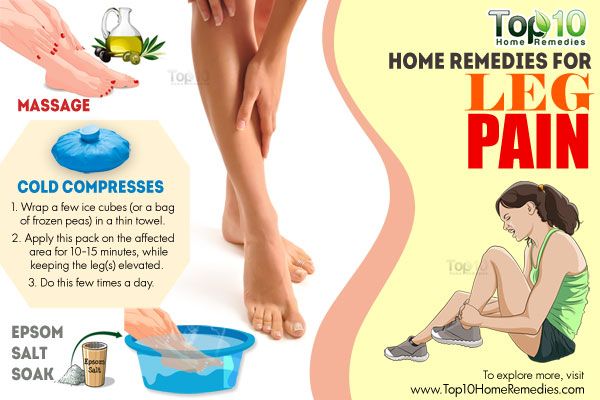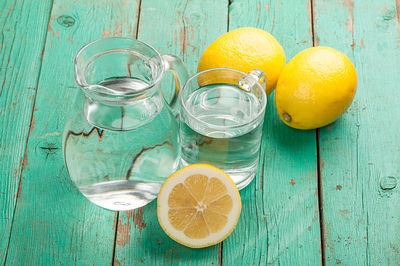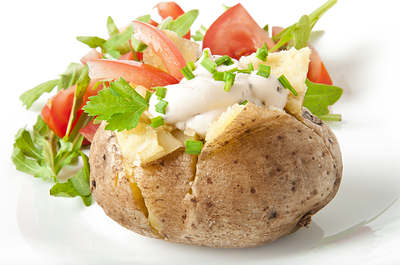Leg pain is a common problem, experienced by people of all ages. Pain
can range from a dull ache to severe stabbing sensations. It can occur
in one or both legs.
Some leg pain may be simply uncomfortable and annoying, whereas severe pain can affect your mobility or make it difficult to put weight on your leg. Other symptoms may include weakness, numbness or a tingling sensation.
There are various causes of leg pain. Most commonly, pain is due to a cramp, muscle spasm, muscle fatigue, nutritional deficiencies, dehydration or standing for a long time.
At times, pain can be a sign of muscle strain, tendonitis or stress fractures (overuse injury). Certain medical conditions, such as deep vein thrombosis, restless leg syndrome, diabetes, arthritis, gout, varicose (spider) veins, and nerve damage can also cause this problem.
Dull or minor pain in aleg often disappears within a few days. You can ease the pain with proper rest, keeping the affected leg elevated, and other simple home treatments.
However, for severe pain that may be hampering your daily activities, consult your doctor.

Here are the top 10 home remedies for leg pain.

In a 2012 study published in the Science Translational Medicine journal, researchers concluded that 10 minutes of massage therapy attenuates inflammatory signaling after exercise-induced muscle damage.
In addition, massage improves blood circulation and helps relieve stress and anxiety.
The compound curcumin in turmeric inhibits a number of different molecules that play a role in inflammation and pain.
Plus, it helps remove the buildup of toxins in the joints and connective tissues. In addition, it provides potassium, calcium and other essential minerals needed to ease pain and inflammation.

In a 2012 study published in the Medicine and Sports Science journal, researchers concluded that tart cherry juice is a safer way to treat muscle pain and inflammation as compared to over-the-counter pain relievers.
Eat ½ cup of fresh, organic tart cherries or drink 1 cup of tart cherry juice, once daily.
Note: Do not drink tart cherry juice if it causes abdominal discomfort or diarrhea.

Ginger contains anti-inflammatory properties that help reduce pain and inflammation. It even improves circulation and blood flow, which helps relieve muscle pain.

Lemon is a rich source of antioxidants that can help ease pain. It helps maintain the pH level of your body, which in turn prevents pain and inflammation.

People with low vitamin D levels present many nonspecific symptoms like leg pain, backache, body aches and thigh pain.
In addition, this vitamin helps regulate two minerals – calcium and phosphorus, which are essential for nerve and muscle functioning.
To fight leg pain, expose your body to early morning sunlight for 10 to 15 minutes daily. Sunlight helps your body produce vitamin D.
Also, include vitamin D-rich foods in your diet, such as salmon, sardines, mackerel, fortified milk, orange juice or cereal. You can even take a supplement, after consulting your doctor.

Potassium deficiency can also contribute to leg pain. Potassium is an important nutrient required for muscle and nerve functioning. It also prevents dehydration.
Source Click here
Some leg pain may be simply uncomfortable and annoying, whereas severe pain can affect your mobility or make it difficult to put weight on your leg. Other symptoms may include weakness, numbness or a tingling sensation.
There are various causes of leg pain. Most commonly, pain is due to a cramp, muscle spasm, muscle fatigue, nutritional deficiencies, dehydration or standing for a long time.
At times, pain can be a sign of muscle strain, tendonitis or stress fractures (overuse injury). Certain medical conditions, such as deep vein thrombosis, restless leg syndrome, diabetes, arthritis, gout, varicose (spider) veins, and nerve damage can also cause this problem.
Dull or minor pain in aleg often disappears within a few days. You can ease the pain with proper rest, keeping the affected leg elevated, and other simple home treatments.
However, for severe pain that may be hampering your daily activities, consult your doctor.

Here are the top 10 home remedies for leg pain.
Contents
1. Cold Compresses
When leg pain occurs after strenuous physical activity, you can simply apply cold compresses. This will help reduce the pain by numbing the affected area and control swelling and inflammation.
- Wrap a few ice cubes (or a bag of frozen peas) in a thin towel.
- Apply this pack on the affected area for 10 to 15 minutes, while keeping the leg(s) elevated.
- Do this a few times a day.
2. Massage
Massage promotes faster recovery from muscle damage that causes leg pain.In a 2012 study published in the Science Translational Medicine journal, researchers concluded that 10 minutes of massage therapy attenuates inflammatory signaling after exercise-induced muscle damage.
In addition, massage improves blood circulation and helps relieve stress and anxiety.
- Rub some warm olive, coconut or mustard oil on the affected area.
- Using gentle yet firm strokes, massage your legs for about 10 minutes.
- Do this 2 or 3 times daily as needed.
3. Turmeric
Another effective home remedy for leg pain is turmeric, which has antioxidant as well as anti-inflammatory properties.The compound curcumin in turmeric inhibits a number of different molecules that play a role in inflammation and pain.
- Mix 1 teaspoon of turmeric powder with enough warm sesame oil to make a paste. Apply it on the affected area and rub gently. Wait 30 minutes before rinsing it off with warm water. Do this twice daily as needed.
- Also, drink a glass of hot turmeric milk once or twice daily.
- Another option is to take turmeric as a dietary supplement, but only under your doctor’s guidance.
4. Apple Cider Vinegar
Apple cider vinegar can also help reduce pain in your leg(s). It is particularly beneficial for arthritis and gout pain. Its alkalizing effect helps dissolve uric acid crystals in the blood.Plus, it helps remove the buildup of toxins in the joints and connective tissues. In addition, it provides potassium, calcium and other essential minerals needed to ease pain and inflammation.
- Add 1 to 2 cups of raw, unfiltered apple cider vinegar to a bathtub of warm water. Soak the affected leg in the water for 30 minutes, once daily for a few days.
- Also, mix 1 to 2 tablespoons of raw, unfiltered apple cider vinegar in a glass of warm water, add a little raw honey and drink it twice daily.
5. Epsom Salt Soak
Epsom salt contains magnesium, an important electrolyte that helps regulate nerve signals in the body. It even works as a natural muscle relaxant and helps reduce pain, inflammation and swelling.
- Add ½ cup of Epsom salt to a hot bath and stir it well.
- Soak your legs in this water for 15 minutes.
- Repeat 2 or 3 times a week.
6. Tart Cherry Juice
If strenuous physical activity is the cause of your leg pain or muscle soreness, drink tart cherry juice. The antioxidant and anti-inflammatory properties of tart cherries help prevent and treat soft tissue injury and pain.In a 2012 study published in the Medicine and Sports Science journal, researchers concluded that tart cherry juice is a safer way to treat muscle pain and inflammation as compared to over-the-counter pain relievers.
Eat ½ cup of fresh, organic tart cherries or drink 1 cup of tart cherry juice, once daily.
Note: Do not drink tart cherry juice if it causes abdominal discomfort or diarrhea.
7. Ginger

Ginger contains anti-inflammatory properties that help reduce pain and inflammation. It even improves circulation and blood flow, which helps relieve muscle pain.
- Massage the affected area with ginger oil 2 or 3 times a day until the pain subsides.
- Also, drink ginger tea 2 or 3 times daily. To make this tea, simmer fresh ginger slices in a cup of water for 5 to 10 minutes. Add some lemon juice and raw honey for taste.
- If opting to take a supplement, consult your doctor first.
8. Lemon

Lemon is a rich source of antioxidants that can help ease pain. It helps maintain the pH level of your body, which in turn prevents pain and inflammation.
- Mix equal amounts of lemon juice and castor oil. Use it to massage the affected area 2 or 3 times a day.
- Also, add the juice of 1 lemon and a little raw honey to a cup of warm water. Drink it twice daily.
9. Vitamin D

People with low vitamin D levels present many nonspecific symptoms like leg pain, backache, body aches and thigh pain.
In addition, this vitamin helps regulate two minerals – calcium and phosphorus, which are essential for nerve and muscle functioning.
To fight leg pain, expose your body to early morning sunlight for 10 to 15 minutes daily. Sunlight helps your body produce vitamin D.
Also, include vitamin D-rich foods in your diet, such as salmon, sardines, mackerel, fortified milk, orange juice or cereal. You can even take a supplement, after consulting your doctor.
10. Potassium

Potassium deficiency can also contribute to leg pain. Potassium is an important nutrient required for muscle and nerve functioning. It also prevents dehydration.
- Eat foods rich in potassium to help fight leg pain. Such foods include baked potatoes and sweet potatoes with the skin, bananas, plums, raisins, prune juice and tomato juice.
- You can also take a supplement, after consulting your doctor.
- You can apply a gel containing 0.0125 percent capsaicin topically to reduce pain.
- Drink 2 to 3 cups of green tea daily.
- Eat 1 teaspoon of yellow mustard with a glass of water twice a day for a few days. It prompts the body to use a neurotransmitter that promotes better muscle functioning.
- Keep your blood pressure and cholesterol under control.
- Avoid drinking or drink only in moderation.
- Avoid smoking as well as secondhand smoke.
- If you have diabetes, take steps to manage your blood sugar level.
- Reduce stress to help alleviate your symptoms.
- Always take time to stretch before and after exercising to prevent leg pain.
- Do gentle stretching exercises for 10 minutes daily.
Source Click here
Comments
Post a Comment